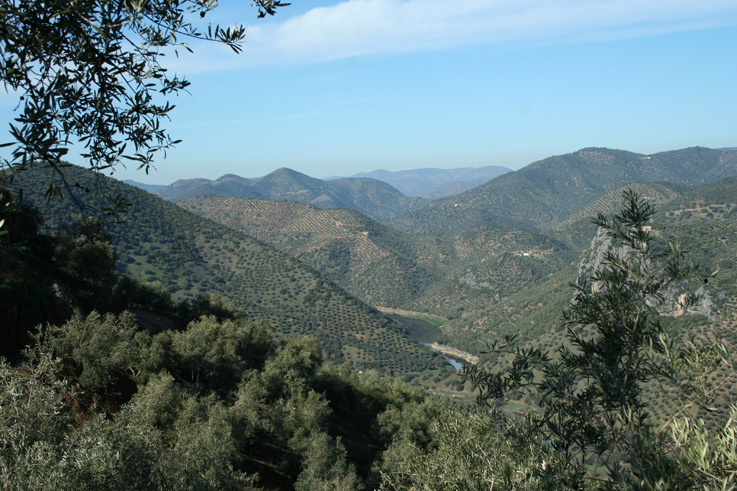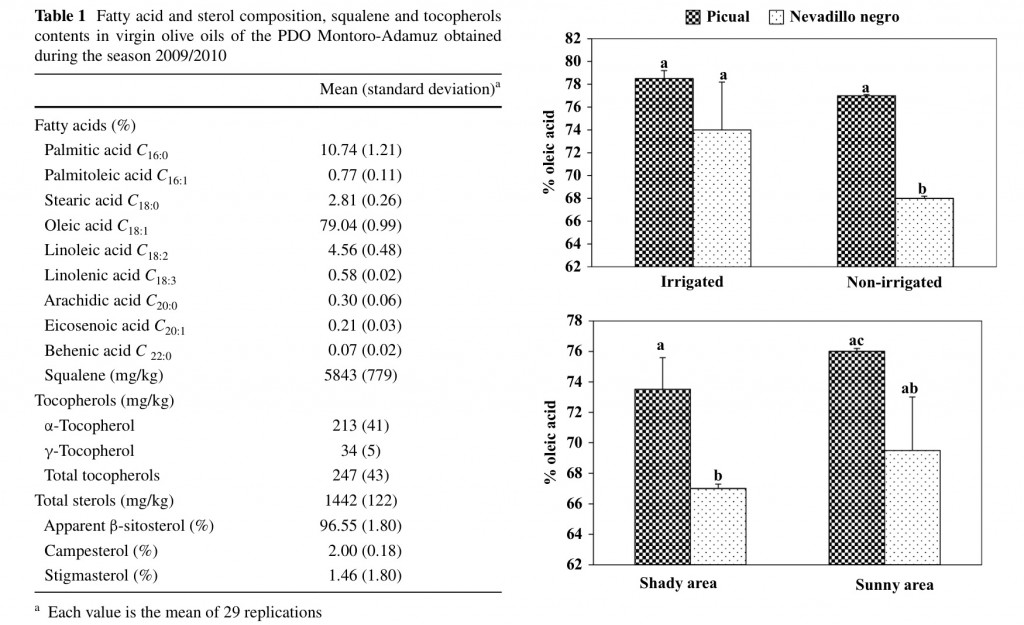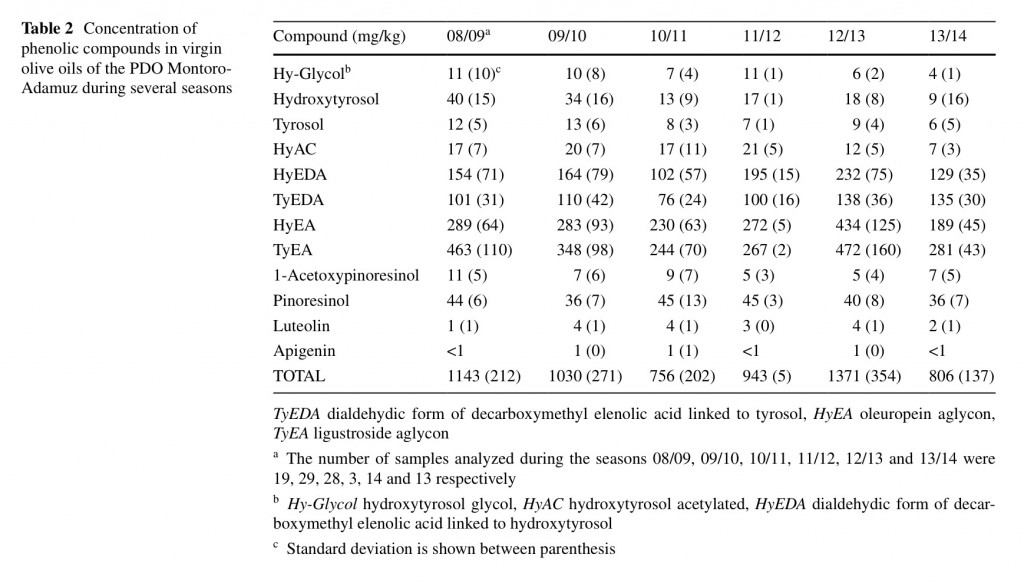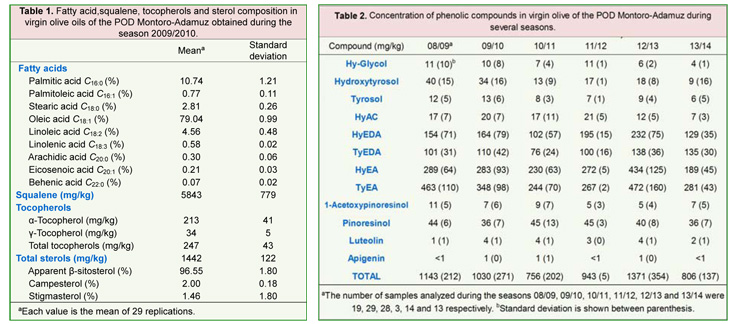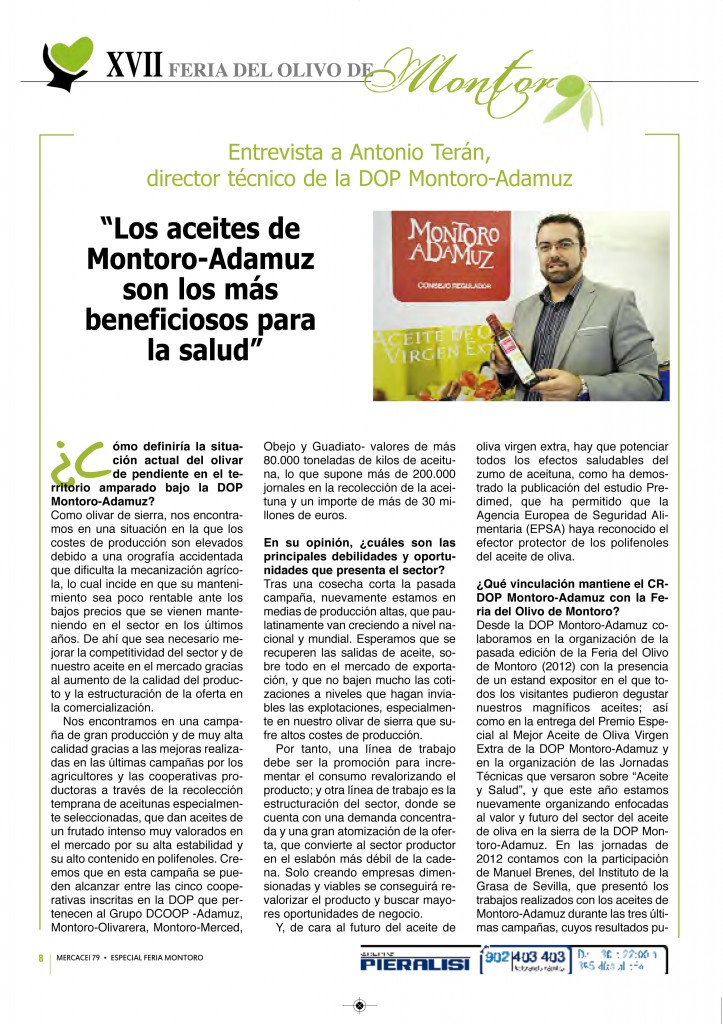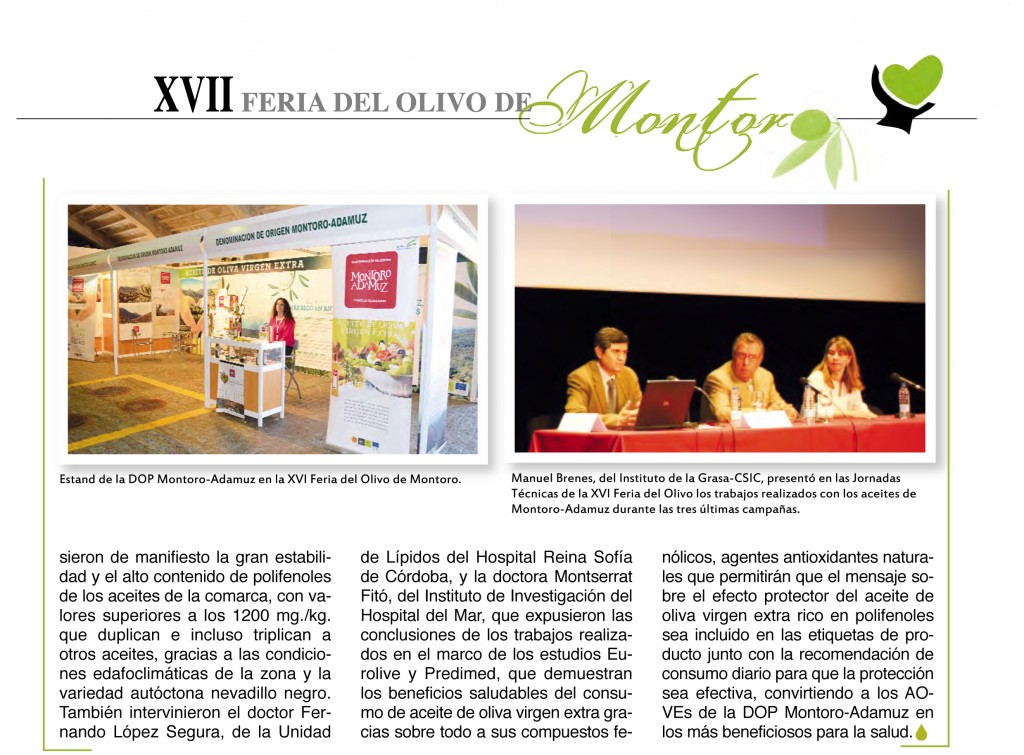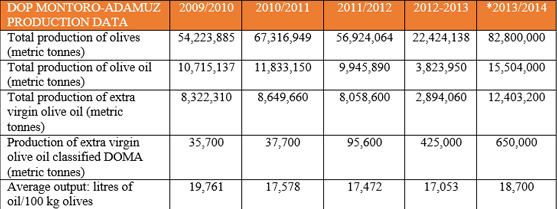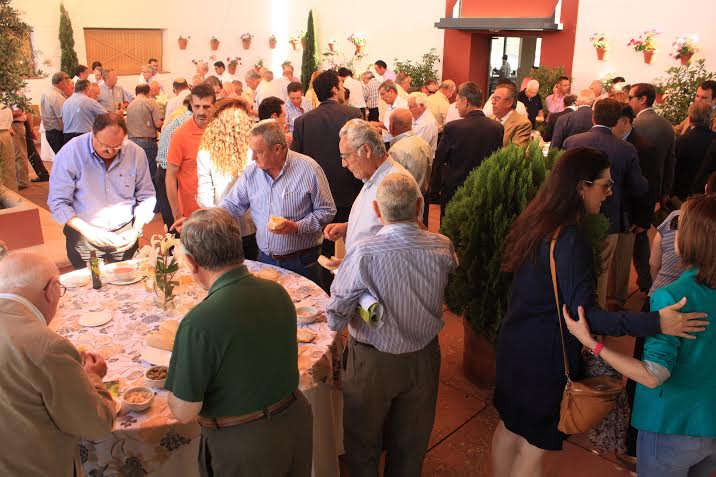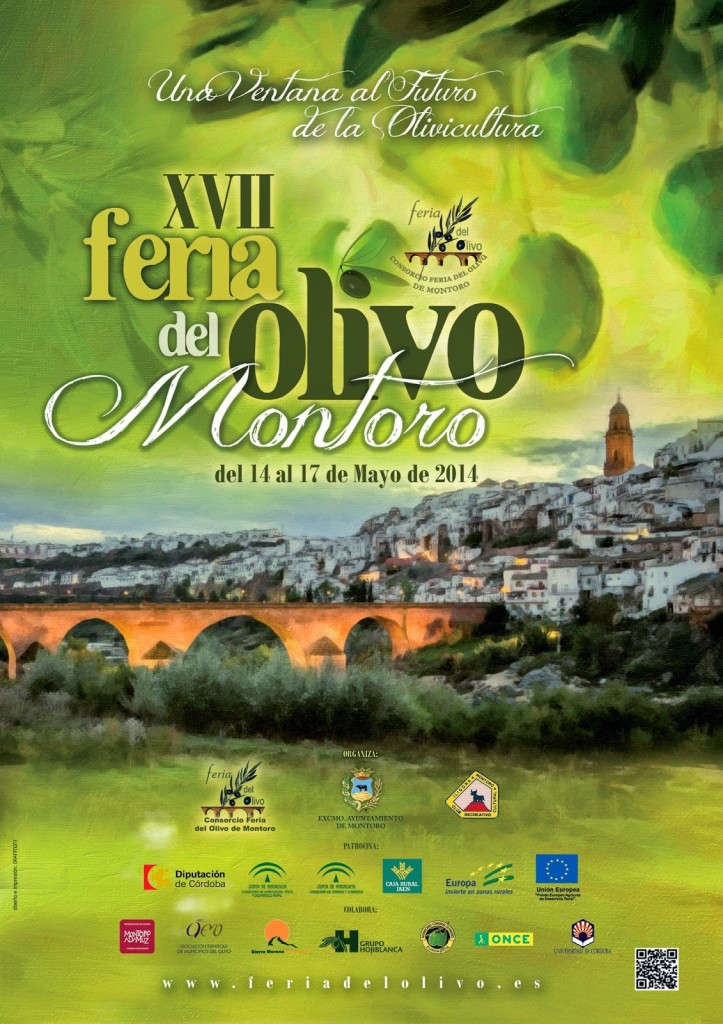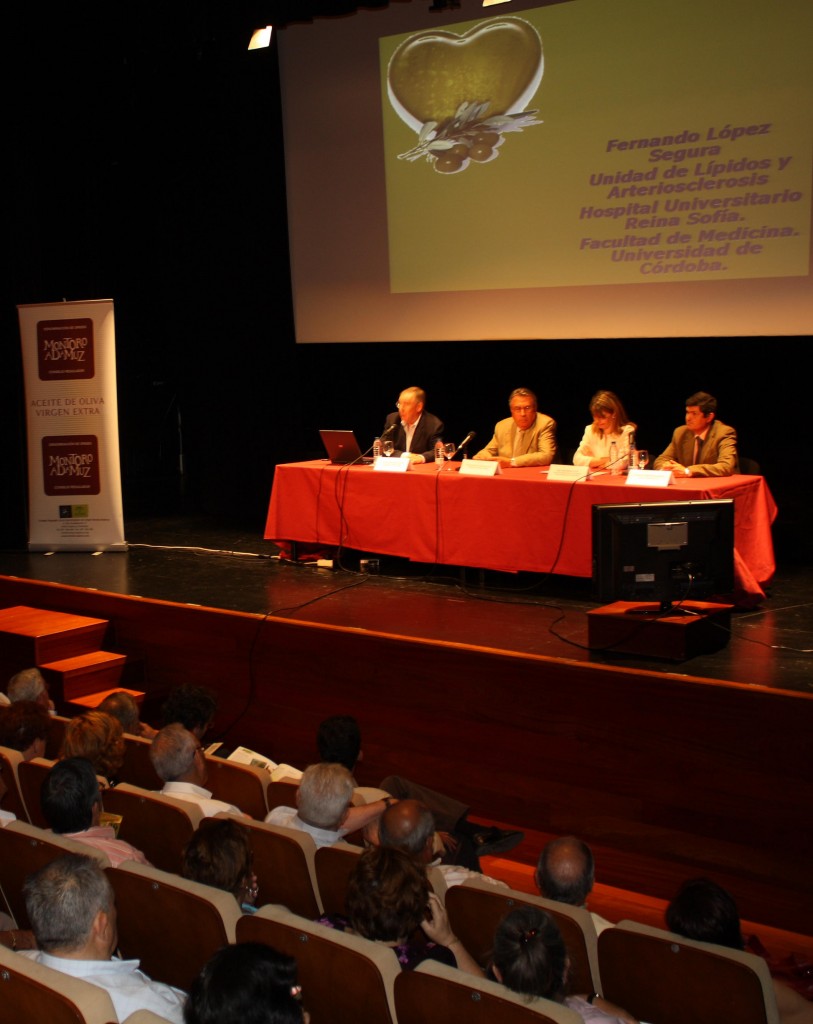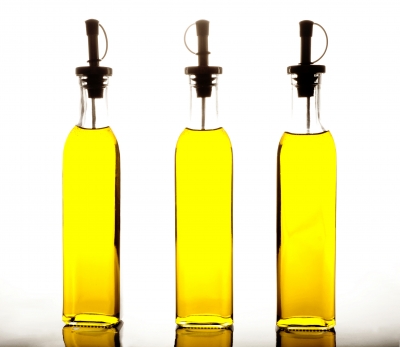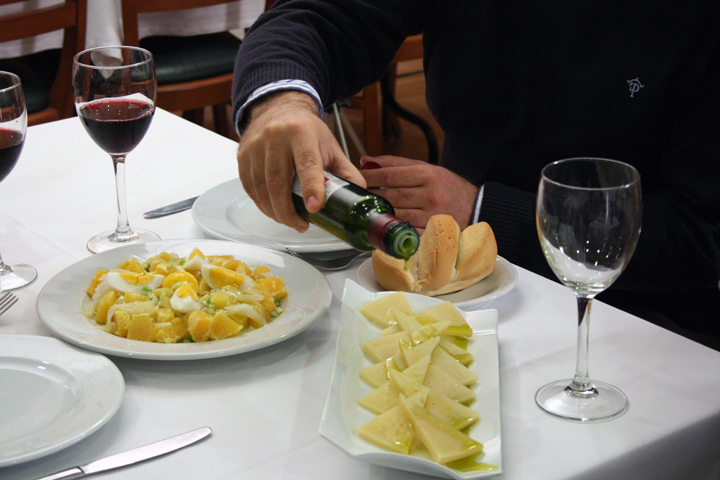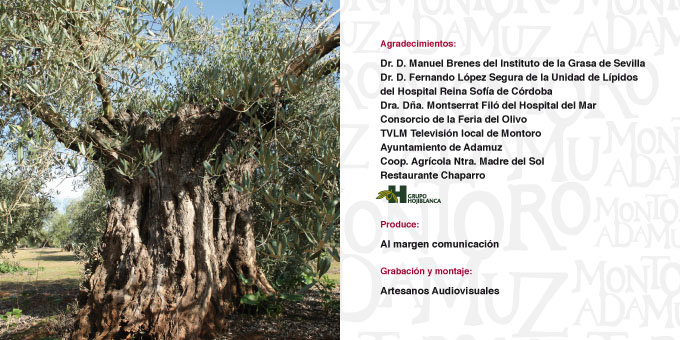Tag Archives: nevadillo negro
(Español) El Hidroxitirosol contra el Alzheimer
Bioactive Compounds in Virgin Olive Oil of the PDO Montoro‐Adamuz
We just received a preview article to be published in the prestigious scientific journal JAOCS on research results in extra virgin olive oils of the Designation of Origin Montoro – Adamuz corresponding to the last seven seasons. Here is the whole contents article Drs C. Romero, Maria. V. Ruiz-Mendez and Manuel Brenes and their conclusions show that the line of work we follow is right, seeking to create the healthiest AOVE.
C. Romero1 · Mª. V. Ruiz‑Méndez1 · Manuel Brenes1
Received: 24 March 2015 / Revised: 22 January 2016 / Accepted: 4 February 2016
Abstract
Virgin olive oil (VOO) is generally recognized as a healthy fat because of its fatty acid composition and content in minor compounds but a wide range of these substances can be found in commercial oils. The concentration of compounds with attributed health benefits were analyzed in VOO of the PDO Montoro-Adamuz. Oleic acid represented around 79 % of the total fatty acids, and the mean squalene and tocopherols concentrations were 5800 and 247 mg/kg respectively. Despite the changes found in polyphenols concentration in the oils analyzed for six consecutive crops, these substances accounted for more than 700 mg/kg. Moreover, the effect of irrigation regime and sun radiation on the content in bioactive substances of these oils was also assessed. No signifcant differences were detected between oils from trees irrigated ad libitum or rain-feed. In contrast, the level of tree radiation exerted a great effect on the concentration of bioactive substances in oils. Oils from trees cultivated in a sunny area (south orientation) had a higher percentage of oleic acid and concentration in phenolic compounds than those from shady areas (north orientation). The opposite was detected for tocopherols and squalene which were more concentrated in oils from olives of the shady area. The results obtained in this study point out VOO of the PDO Montoro-Adamuz as a very healthy fat due to their composition in bioactive substances, in particular their richness in phenolic compounds.
Introduction
The benefits of consuming olive oil have been known since antiquity and were traditionally attributed to its high con- tent of oleic acid. However, olive oil possesses a myriad of biologically active minor components such as tocopherols, sterols, squalene and particularly phenolic compounds that make this fat one of the healthiest among vegetable oils worldwide.
The positive effect of dietary monounsaturated fats in preventing cardiovascular diseases and cancer has exten- sively been reported [1, 2], and claimed by international food and health agencies. The US Food and Drug Administration has stated that the consumption of olive oil may reduce the risk of coronary heart disease due to its content in monounsaturated fat [3], and the European Food Safety Authority has reported that “replacing saturated fats in the diet with unsaturated fats contribute to the maintenance of normal blood cholesterol level” [4].
Sterols and squalene are other bioactive substances pre- sent in olive oil. Phytosterols or plant sterols can reduce intestinal absorption of cholesterol and subsequently serum cholesterol levels thereby they can contribute to prevention of myocardial infarction [5]. They have also been attributed with anticarcinogenic and antitumor properties [6].
Moreover, α-tocopherol, which is the most common form of vitaminm E, is the major tocopherol in olive oil, and it shows the highest antioxidant and biological activ- ity among tocopherols and tocotrienols [7]. The EFSA has also indicated that vitamin E “contributes to the protection of cells from oxidative stress” [4].
Of particular interest from a nutritional point of view the phenolic compounds are that they comprise a high number of substances found at levels of mg/kg oil but recognized with many nutritional activities because they exhibit protective effects against neurodegenerative and cardiovascular diseases [8]. Precisely, the European Commission has recently approved a health claim for olive oil polyphenols because of their contribution to the protection of LDL particles from oxidative damage [4].
There are many other minor substances in olive oil (carotenoids, aliphatic alcohols, triterpenic acids and oth- ers) although due to their low content in oil and/or low biological activity the scientific community has paid them less attention up to now.
The chemical composition of virgin olive oil (VOO) is in uenced by many variables like olive cultivar, agronomic and pedo-climatic conditions, fruit maturity and technological factors, among others. Consequently, VOO is not a uniform product but oils with a wide range in chemical composition and content in nutritional substances are commercialized. Hence, consumers are demanding VOO rich in these bioactive substances.
In the last few years, there has been increasing interest in the geographical characterization of VOO according to regulations on Protection Designation of Origin (PDO) and Protected Geographical Indication (PGI) [9]. These regulations are a guarantee of a precise geographical ori- gin that determines sensory and chemical characteristics of oil but content in bioactive substances are not generally certified.
The VOO of the PDO Montoro-Adamuz is obtained from fruits of the Picual (>90 %) and Nevadillo Negro (700 mg/kg oil) [10]. However, no references can be found regarding the amount of these substances and others bioactive in the literature, particularly during several years. The chemical characterization of nutritional substances present in VOO of the PDO Montoro-Adamuz was studied for the first time.
The agricultural area with the denomination Montoro- Adamuz comprises mountainous orchards that suffer extreme Mediterranean climatic conditions, particularly shortage of water in summer and autumn. Hence, the main agronomic factors that can influence the content of these oils in bioactive substances are the irrigation regime and the orientation of the olive trees in the mountain, either in a shady or a sunny area.
Materials and Methods
VOO of the PDO Montoro‐Adamuz
Samples of oil were taken from industrial tanks by authorized personnel of the PDO, and sent to the laboratory for analysis without any stored period. These oils were collected from the season 2008/2009 to 2013/2014, and graded as extra virgin olive oils.
Effect of Irrigation and Sun Radiation on Bioactive Compounds in Oils
Olives were taken from trees located in the geographical area of the PDO Montoro-Adamuz (Córdoba, Spain) during the season 2010/2011 ( first fortnight of December). Fruits of the Picual and Nevadillo negro cultivars were harvested from trees irrigated ad libitum or rain-feed only. All trees were cultivated in the same area by the same grower. Representative fruits (3 kg sample) at a maturity stage at which 50 % of the fruits displayed black color on the surface, and the rest of them had yellow color were hand-picked from 6 trees of each assay and brought to the laboratory for oil extraction the same day.
Fruits of both cultivars were also hand-picked from another different orchard from trees located in either a shady or a sunny area. In the northern hemisphere, the area of the mountain facing south receives more solar radiation than north. The olive trees were all rain-feed. These olives had a black surface color and they were collected from 12 trees of both the shady and the sunny area.
Oil extraction was performed using an Abencor labo- ratory oil mill (Comercial Abengoa SA, Spain) equipped with a hammer mill, a thermobeater, and a paste centrifuge. The extraction was carried out at 28 °C with kneading for 30 min. The oily must was decanted and ltered before analysis. Extraction was run in duplicate.
Individual Quanti cation of Phenolic Compounds in Oils
They were extracted from the oil with N,N-dimethylfor- mamide (DMF) [11]. Brie y, 0.6 g of oil was extracted with 3 × 0.6 mL of DMF; the extract was then washed with hexane, and N2 was bubbled into the DMF extract to eliminate residual hexane. Finally, the extract was ltered through a 0.22 μm pore size nylon lter and injected into the chromatograph.
The chromatographic system consisted of a Waters 717 plus autosampler, a Waters 600 pump, and a Waters heater module (Waters Inc., Mildford, MA, USA). A Spherisorb ODS-2 (5 μm, 25 cm × 4.6 mm i.d., Waters Inc.) column was used. Separation was achieved using an elution gradient with an initial composition of 90 % water (pH adjusted to 3.0 with phosphoric acid) and 10 % methanol [11]. The concentration of the latter solvent was increased to 30 % over 10 min and maintained for 20 min. Subsequently, the methanol percentage was raised to 40 % over 10 min, maintained for 5 min, and then increased to 50 %. Finally, the methanol percentage was increased to 60, 70, and 100 % in 5 min periods. Initial conditions were reached in 10 min. A ow of 1 mL/ min and a temperature of 35 °C were used in all of the analyses. A Waters 996 diode array detector and a Jasco FP-920 uorescence detector (Jasco, Tokyo, Japan) were connected in series. Hydroxytyrosol, hydroxytyrosol glycol and tyrosol were purchased from Sigma-Aldrich (St. Louis, MO, USA), apigenin and luteolin from Extrasynthese (Genay, France), and the rest of standards were obtained by semipreparative HPLC following a similar conditions as described above [11].
Total Contents of Hydroxytyrosol and Tyrosol in Oils
They were analyzed following the method described else- where [12]. Olive oil (2.5 g) and 2 M HCl (50 mL) were put into a 100 mL glass bottle that was closed with a polypropylene cap. The mixture was vigorously homogenized by agitation at 400 rpm in an orbital shaking incubator model WY-200 for 5 h (Comecta SA, Barcelona, Spain). Experiments were run at 25 °C. Finally, 2 mL of the aqueous phase was removed by a plastic pipet, ltered through a 0.22 μm pore size nylon lter, and injected into the chromatograph. The chromatographic system was the same as noted above, except the gradient program of solvents that was modifed, the washing period starting at 20 min from injection. Chromatograms were recorded at 280 nm and quanti cation was made using external calibration with standards (hydroxytyrosol and tyrosol) purchased from Sigma-Aldrich (St. Louis, MO, USA).
Squalene
Hydrocarbons were obtained by adsorption chromatography following the method described elsewhere [13]. GC was performed by using an Agilent 6890A chromatograph equipped with a cold on-column injector with oven-track system and a ameionization detector. A HP-5 column (5 % diphenyl/95 % dimethyl polysiloxane, length 15 m, 0.32 mm i.d. and 0.1 μm lm thickness; Agilent Tech.) was used. Hydrogen (140 kPa inlet pressure) was used as carrier gas and nitrogen as makeup gas. The oven temperature was held at 80 °C for 5 min and then increased at 45 °C/min to 120 °C and then at 5 °C/min to 310 °C where it was held for 7 min. The detector temperature was 350 °C. Concentration of hydrocarbons was obtained comparing the total area and the squalene internal standard area.
Tocopherols
They were determined by HPLC with fluorescence detection (excitation at 290 nm and emission at 330 nm), following IUPAC Standard Method 2.432 [14]. The column was a Lichrosorb Si 60 packed with silica (5 μm particle size) (Merck, Darmstadt, Germany). The mobile phase was n-hexane/isopropanol (99:1, v/v) with a ow rate of 1 mL/ min.
Fatty Acids and Sterols
They were measured according to European Community Regulation 702/2007 [15].
Statistical Analysis
Statistica software version 7.0 was used for data processing (Statistica for Windows, Tulsa, OK, USA). A comparison among mean variables was made by Duncan ́s multiple- range tests, and the differences were considered signi cant when p < 0.05.
Results and Discussion
Fatty Acids
All the analyzed samples showed fatty acid content within the range required by European Regulation [15] (Table 1), being oleic acid the major fatty acid (ca. 79 %), which has been previously observed for VOO obtained from the Picual cultivar [16]. The EU regulation establishes a range for this monounsaturated acid between 55 and 83 % thereby the VOO of the PDO Montoro-Adamuz are included close to the highest level.
Figure 1 shows the effects of two agronomic factors on the content of oleic acid in these VOO. First, it must be noted that oils obtained from olives of the Nevadillo negro cultivar had a lower percentage of oleic acid than those of the Picual cultivar. However, the percentage of Nevadillo negro oil into the total fat of VOO of the PDO Montoro-Adamuz is lower than 10 % [10]. Otherwise, oils from olives cultivated under non-irrigation trees presented a lower percentage of oleic acid for both cultivars Picual and Nevadillo negro, which is in agreement with previous studies [17]. It is known that reduced growth temperatures increase membrane lipid unsaturation in order to maintain membrane uidity at low temperature, and several researchers have found higher percentage of oleic acid in oils obtained from cooler than warmer climate conditions of two different geographical areas [18]. In our study, oils from sunny areas trended to contain a higher percentage
Table 1 Fatty acid and sterol composition, squalene and tocopherols contents in virgin olive oils of the PDO Montoro-Adamuz obtained during the season 2009/2010
Fig. 1 Influence of agronomic conditions on the content in oleic acid
of oils obtained at laboratory scale of the Picual and Nevadillo negro
cultivar. Bars mean the standard deviation of two samples. Different
letters mean significant differences according to a Duncan´s multiple
range test (P < 0.05)
of oleic acid but it was not statistically signi cant (Fig. 1), thereby other agronomic conditions might influence to a large extent on the content of this fatty acid.
Squalene
There are no limits for this bioactive substance in the international regulations on olive oil but this compound has been found in VOO in a wide range from 800 to 12,000 mg/ kg [13]. Squalene values for Greek oils have been recorded between 2000 and 6500 mg/kg [19], and between 900 and 8700 mg/kg for Italian oils [20].
VOO of the PDO Montoro-Adamuz showed a mean squalene concentration of 5800 mg/kg, which is in accordance with previous data reported on Picual oils [21]. Like many other minor substances present in VOO, the concentration of squalene depends on olive cultivar, among other variables. The Nevadillo negro oils tended to possess a higher amount of this substance than those of the Picual cultivar (Fig. 2). Otherwise, the concentration of squalene was slightly in uenced by the irrigation regime of the olive trees, which is in disagreement with a previous work [22] that found a consistently lower content of squalene in oils from trees receiving the lowest irrigation level. In contrast, the location of the olive tree in the same orchard had a great in uence on the concentration of squalene in oils because both Picual and Nevadillo negro oils from fruit cultivated in the sunny area had a signi cant lower content than those from the shady area (Fig. 2). Several studies have shown that plants under environmental signals like high salinity, high UV-B levels and drought allocate squalene to produce triterpenes and sterols. Likewise, the content of squalene in both fruit and oil is in uenced by olive maturation [23], which is currently affected by sun radiation. Hence, there are some interactions between sun radiation level and other agronomic factors that could affect the content of oils in squalene.
Tocopherols
As expected, α-tocopherol was the major tocopherol in VOO of the PDO Montoro-Adamuz, followed by γ-tocopherol (Table 1). The mean value of total tocopherols was 247 mg/kg, which is in the average of the range previously reported for tocopherols in Spanish VOO (84- 463 mg/kg) [7], and in agreement with the content previ- ously found in Picual VOO [24]. It must be noted that the Nevadillo negro oils presented a higher concentration of these substances than the Picual (Fig. 3).
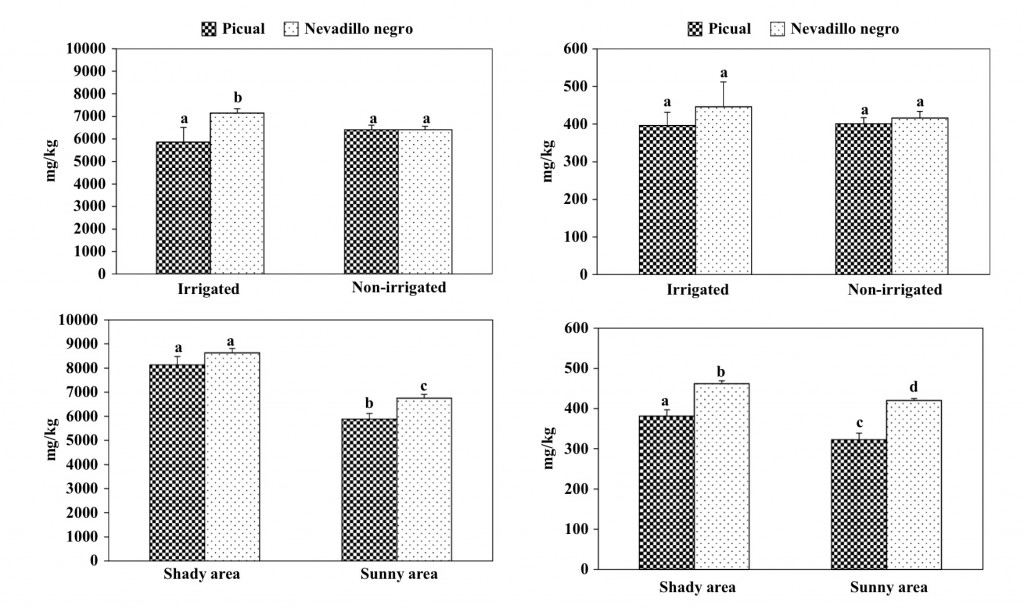 Fig. 2 Influence of agronomic conditions on the content in squalene of oils obtained at laboratory scale of the Picual and Nevadillo negro cultivar. Bars mean the standard deviation of two samples. Different letters mean significant differences according to a Duncan´s multiple range test (P < 0.05)
Fig. 2 Influence of agronomic conditions on the content in squalene of oils obtained at laboratory scale of the Picual and Nevadillo negro cultivar. Bars mean the standard deviation of two samples. Different letters mean significant differences according to a Duncan´s multiple range test (P < 0.05)
Fig. 3 Influence of agronomic conditions on the content in tocopherols
of oils obtained at laboratory scale of the Picual and Nevadillo negro cultivar. Bars mean the standard deviation of two samples. Different letters mean significant differences according to a Duncan’s multiple range test (P < 0.05)
Furthermore, no significant differences were observed in the concentration of tocopherols in VOO due to the irrigation regime. By contrast, the oils from olives cultivated in the sunny areas had a low content in these substances than those obtained from the shady area irrespective of the cultivar. It is assumed that the tocopherols content in VOO decreases as ripening progress, it is cultivar dependent, and the rainfall level affects its concentration, increasing with water-stress [7]. How- ever, no data are available on the effect of the sun radiation on olive trees during the year.
Sterols
A mean value of 1442 mg/kg oil was found for total sterols content in the VOO of the PDO Montoro-Adamuz (Table 1), which is in accordance with data previously reported for oils obtained from fruits of the Picual cultivar [24]. This is a value higher than the minimum of 1000 mg/kg oil established for authenticity of VOO by European legislation [15]. Although many factors can influence the content of VOO in sterols, their concentration currently range between 1000 and 2000 mg/kg, lower than data observed for other vegetable oils such as soybean, sun ower and rapeseed.
Phenolic Compounds
There are many studies that report the composition of VOO as in uenced by the growing area [25, 26], which has been mainly related to the rainfall level and altitude location of the olive trees. One of the main characteristics of the VOO of the PDO Montoro-Adamuz is their high content in phenolic compounds, which must be higher than 700 mg/ kg [10]. In Table 2, it is recorded the phenolic composition of these oils for the last six seasons. Previous works have reported the effect of the bearing cycle on the quality of olive oils [22] but few studies are available on the individual characterization of phenolic compounds in POD olive oils for many years. Obviously, there were differences among seasons but the total content was always higher than the limit of 700 mg/kg. Oils from the 2012/2013 season showed statistically higher concentration in total phenolic compounds than those of the 2008/2009, 2009/2010 and 201/2012 seasons, having those of the 2010/2011 and 2013/2014 season the lower statistical content. It must be noted that this is a very high concentration if it is compared with previous data from the literature [27].
In particular, these oils of Montoro-Adamuz are very rich in oleuropein and ligustroside aglycons (HyEA and TyEA), followed by the dialdehydic forms of decarboxymethyl elenolic acid linked to hydroxytyrosol (HyEDA) and tyrosol (TyEDA). The latter substance seems to be mainly responsible for the burning, pungent sensory notes in VOO [28], and it did not reach a higher concentration of 140 mg/kg in VOO of the Montoro-Adamuz, which could explain the non-extremely bitter sensation of these oils despite their high total phenolic content.
The phenolic profile of these oils also showed a significant presence of hydroxytyrosol, tyrosol, hydroxytyrosol acetylated, hydroxytyrosol glycol and, to a lesser extent, the avonoids luteolin and apigenin. Because of the low content in the lignan 1-acetoxypinoresinol, the percentage of Picual oil in the Montoro-Adamuz oil must be high since this substance has been proposed as a biomarker of Picual oils [11]. Table 3 shows the phenolic pro le of oils obtained from either Picual or Nevadillo negro fruit. It can be observed a big difference between these two oils, particularly the concentration of 1-acetoxypinoresinol was much lower in Picual oils than Nevadillo negro, whereas the opposite was found for the other lignan pinoresinol. These data corroborate the great contribution of the Picual cultivar to the characteristics of the oils of the PDO Mon- toro-Adamuz. Furthermore, the Nevadillo negro oil had a higher total phenolic content than the Picual oil, taking into consideration that all fruit were harvested in the same orchard.
 Fruits were cultivated in the same orchard and trees were not irrigated.
Fruits were cultivated in the same orchard and trees were not irrigated.
Values are the mean of duplicates
a Standard deviation is shown between parenthesis. See Table 2 for
compounds identification
Nevadillo negro oils were also richer in phenolic com- pounds irrespective of the irrigation regime or sun exposition level of the eld (Fig. 4). Likewise, total phenols were higher in oils from non-irrigated trees of the Nevadillo negro cultivar but the opposite behavior was found for the Picual cultivar. Previous works have shown that concentration of phenolic compounds decreases in VOO with increasing water irrigation of the olive trees [17, 29] but contradictory data has also been reported [30]. In fact, Moriana et al. [31] has proposed that the effect of irriga- tion on phenolic concentration takes place all year round and not just during the oil accumulation phase, which is the period when most growers irrigate their olive trees.
In our experiments, it was tested the effect of the sun exposition level of the olive trees on the phenolic content of the VOO Montoro-Adamuz (Fig. 4). Both Picual and Nevadillo negro oils obtained from a sunny area exhibited higher phenolic concentration that those of the shady area. Olives grown at high altitude give rise to oils with high concentration in phenolic compounds [24], and this effect can be related to the climatic conditions but also with a higher heat accumulation. Hence, it is reasonable to nd a high concentration of phenolic compounds in VOO obtained from olives cultivated in sunny areas.
As well as the individual quanti cation of the main phenolic compounds of the oils, it was measured the total concentrations of both hydroxytyrosol and tyrosol following the method proposed recently by Romero and Brenes (2012, 2014). There is not an of cial method to analyze phenolic compounds in olive oil because of several drawbacks but this new method allows the reliable determination of the total concentration of the two most important simple phenolic compounds present in olive oil. The average contents of hydroxytyrosol and tyrosol in VOO of the POD Montoro-Adamuz during the seasons 2008–2013 were 184 ± 60 and 186 ± 47 mg/kg respectively. These data are higher than most of those reported for many commercial Spanish VOO [12], and they con rm the richness of these oils in these bioactive substances.
Conclusions
Many variables contribute to the concentration of phenolic compounds in VOO such as cultivar, agronomic conditions, technological processing, irrigation and others. In the case of the VOO of the POD Montoro-Adamuz, it has been attributed to (1) the presence of the Nevadillo negro cultivar in the coupage of these oils, (2) the extreme agroclimatic conditions which cause physiological stress in the olive tree, and (3) the early harvesting of the fruit [10]. The results obtained in this work indicate that VOO of the POD Montoro-Adamuz are very rich in bioactive substances. They contain a high content in oleic acid, squalene, sterols and tocopherols but they are particularly rich in phenolic compounds, being their concentration higher than 700 mg/kg during the last six crop seasons. Besides, their total contents of hydroxytyrosol and tyrosol was higher than reported for many other VOO. The irrigation regime studied did not show a signi cant effect on the content of bioactive substances in these oils. By contrast, the level of sun radiation on olive trees exerted a great in uence on the concentration of these substances. Oils from trees cultivated in a sunny area had a higher percentage of oleic acid and concentration in phenolic compounds than those from shady areas. The opposite was detected for tocopherols and squalene which were more concentrated in oils from olives of the shady area. These results could contribute to make blended oils with speci c content in bioactive substances.
Acknowledgments The authors are grateful to Irene de la Rosa for
technical help. The authors also thank Antonio Terán and PDO Montoro-
Adamuz for providing samples and support.
References
1. Carrillo C, Cavia MD, Alonso-Torre SR (2012) Antitumor
effect of oleic acid; mechanisms of action; a review. Nutr Hosp
27:1860–1865
2. Varela LM, Ortega-Gomez A, Lopez S, Abia R, Muriana FJ, Bermudez
B (2013) The effects of dietary fatty acid on the postprandial
triglyceride-rich lipoprotein/apoB48 receptor axis in human
monocyte/macrophage cells. J Nutr Biochem 24:2031–2039
3. FDA (Food and Drug Administration, USA) (2004) Docket No.
2003Q-0559. Monounsaturated fatty acids from olive oil and
coronary heart disease
4. EC (European Commission) (2012) Regulation No 432/2012
establishing a list of permitted health claims made on foods. Off
J Eur Union L/136/1
5. Klingberg S, Ellegard L, Johansson I, Jansson JH, Hallmans G,
Winkvist A (2013) Dietary intake of naturally occurring plant
sterols is related to a lower risk of a first myocardial infarction
in men but not in women in Northern Sweden. J Nutr 143:1630–1635
6. Spanova M, Daum G (2011) Squalene-biochemistry, molecular
biology, process biotechnology, and applications. Eur J Lipid Sci
Technol 113:1299–1320
7. Beltrán G, Jiménez A, del Rio C, Sánchez S, Martínez L, Uceda
M, Aguilera MP (2010) Variability of vitamin E in virgin olive
oil by agronomical and genetic factors. J Food Comp Anal
23:633–639
8. Frankel EN (2011) Nutritional and biological properties of extra
virgin olive oil. J Agric Food Chem 59:785–792
9. García-González DL, Tena N, Aparicio R (2012) Describing the
chemical singularity of the Spanish protected designations of
origin for virgin olive oils in relation to oils from neighbouring
areas. Grasas Aceites 63:26–34
10. EC (European Commission) (2010). Publication of an applicant
pursuant to Article 6 (2) of Council Regulation (EC) No
510/2006 on the protection of geographical indications and designations
of origin for agricultural products and foodstuffs. Off J
Eur Union C 125/19
11. García A, Brenes M, Romero C, García P, Garrido A (2002) Use
of 1-acetoxypinoresinol to authenticate Picual olive oils. Int J
Food Sci Technol 37:615–625
12. Romero C, Brenes M (2012) Analysis of total contents of
hydroxytyrosol and tyrosol in olive oils. J Agric Food Chem
60:9017–9022
13. Lanzón A, Albi T, Cert A, Gracián J (1994) The hydrocarbon
fraction of virgin olive oil and changes resulting from refining. J
Am Oil Chem Soc 71:285–292
14. IUPAC (International Union of Pure and Applied Chemistry)
(1992) Standards methods for the analysis of oils, fats and derivatives.
1st Suppl. to 7th Edn., Pergamon Press, Oxford
15. EC (European Commission) (2007). Regulation EC/702/2007
amending Regulation EEC/2568/91 on the characteristics of
olive oil and olive-residue oil and on the relevant methods of
analysis. Off J Eur Union L-161/11-27
16. Beltrán G, del Rio C, Sánchez S, Martínez L (2004) Influence of
harvest date and crop yield on the fatty acid composition of virgin
olive oils from cv. Picual. J Agric Food Chem 52:3434–3440
17. Stefanoudaki E, Williams M, Chartzoulakis K, Harwood J (2009)
Effect of irrigation on quality attributes of olive oil. J Agric Food
Chem 57:7055–7408
18. Piravi-Vanak Z, Ghasemi JB, Ghavami M, Ezzatpanah H, Zolfonoun
E (2012) The influence of growing region on fatty acids
and sterol composition of Iranian olive oils by unsupervised
clustering methods. J Am Oil Chem Soc 89:371–378
19. Nenadis N, Tsimidou MZ (2002) Determination of squalene in
olive oil using fractional crystalization for simple preparation. J
Am Oil Chem Soc 79:257–259
20. De Leonardis A, Macciola V, De Felice M (1998) Rapid determination
of squalene in virgin olive oils using gas-liquid chromatography.
Ital J Food Sci 10:75–80
21. Samaniego-Sánchez C, Quesada-Granados JJ, López-García de
la Serrana H, López-Martínez MC (2010) ß-Carotene, squalene
and waxes determined by chromatography method in picual
extra virgin olive oil obtained by a new cold extraction system. J
Food Comp Anal 23:671–676
22. Ben-Gal A, Dag A, Basheer L, Yermiyahu U, Zipori I, Kerem
Z (2011) The influence of bearing cycles on olive oil quality
response to irrigation. J Agric Food Chem 59:11667–11675
23. Fernández-Cuesta A, León L, Velasco L, De la Rosa R (2013)
Changes in squalene and sterols associated with olive maturation.
Food Res 54:1885–1889
24. Aparicio R, Luna G (2002) Characterization of monovarietal virgin
olive oils. Eur J Lipid Sci Technol 104:614–627
25. Di Vaio C, Nocerino S, Paduano A, Sacchi R (2013) Influence
of some environmental factors on drupe maturation and olive oil
composition. J Sci Food Agric 93:1134–1139
26. Kesen S, Kelebek H, Selli S (2014) LC-ESI-MS characterization
of phenolic profiles Turkish olive oils as influenced by geographic
origin and harvest year. J Am Oil Chem Soc 91:385–394
27. García A, Brenes M, García P, Romero C, Garrido A (2003) Phenolic
content in commercial olive oils. Eur Food Res Technol
216:520–525
28. Andrewes P, Busch JLHC, Joode T, Groenewegen A, Alexandre
H (2003) Sensory properties of virgin olive oil polyphenols:
identification of deacetoxy-ligstroside aglycon as a key contributor
to pungency. J Agric Food Chem 51:1415–1420
29. Tovar MJ, Motilva MJ, Luna M, Girona J, Romero MP (2001)
Analytical characteristics of virgin olive oil from young trees
(Arbequina cultivar) growing under linear irrigation strategies. J
Am Oil Chem Soc 78:843–849
30. Servili M, Selvaggini R, Esposto S, Taticchi A, Montedoro GF,
Morozzi G (2004) Health and sensory properties of virgin olive
oil hydrophylic phenols: agronomic and technological aspects of
production that affect their occurrence in the oil. J Chromatogr
1054:113–127
31. Moriana A, Pérez-López D, Gómez-Rico A, Salvador M, Olmedilla
N, Ribas F, Fregapane G (2007) Irrigation scheduling for
traditional, low-density olive orchard: water relations and influence
on oil characteristics. Agric Water Manage 8:71–179
Cáncer de mama, ayuda a prevenirlo tomando aceite de oliva virgen extra
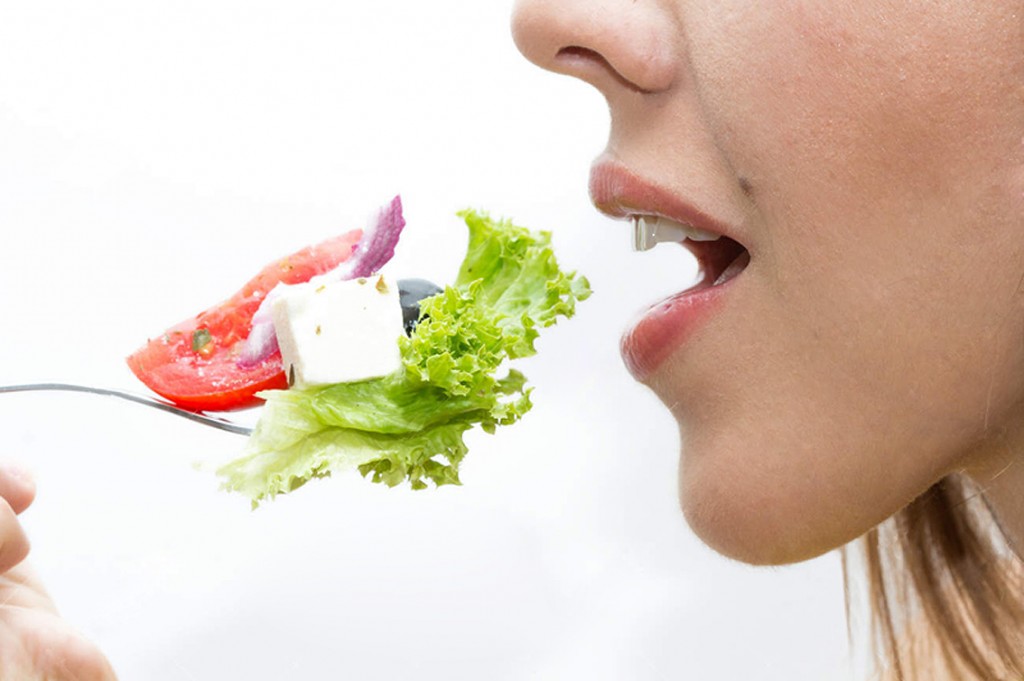 Ha quedado demostrado que la dieta mediterránea enriquecida con aceite de oliva virgen extra, ayuda a reducir en dos terceras partes el riesgo de contraer cáncer de mama. Estas conclusiones se sancan del estudio Predimed que se ha publicado recientemente.
Ha quedado demostrado que la dieta mediterránea enriquecida con aceite de oliva virgen extra, ayuda a reducir en dos terceras partes el riesgo de contraer cáncer de mama. Estas conclusiones se sancan del estudio Predimed que se ha publicado recientemente.
En este pormenorizado estudio llevado a cabo entre el 2003 y 2009, participaron 4.200 mujeres de entre 60 y 80 años divididas en tres grupos. A las que estaban incluidas en el grupo de control se les indicó que debían seguir la dieta mediterránea, el segundo que complementase esa dieta con nueces y otros frutos secos, y el tercero además que lo reforzara tomando 4 cucharadas soperas de aceite de oliva virgen extra. Precisamente fue en este tercer grupo en el que se percibieron muchos menos casos de cáncer de mama, hasta un 68% menos. Las participantes fueron seleccionadas de toda España y distribuidas de manera aleatoria en cada grupo, por lo que los factores de riesgos eran estadísticamente similares en los tres grupos.
Por lo tanto, las tasas absolutas de cáncer de mama por cada 1.000 mujeres/año son de 1,1 en el primer grupo, de 1,8 en el segundo grupo (los frutos secos también aportaron cierta protección frente a este cáncer) y de 2,9 en el tercero, lo que hace destacable el poder anticancerígeno del aceite de oliva virgen extra, y en concreto contra el cáncer de mama.
España y los países del sur de Europa en general, han tenido históricamente unas tasas de cáncer de mama inferiores a la media mundial. Ahora se demuestra que la dieta que usamos en estas zonas es un factor determinante a la hora de tener esta baja incidencia en estos cánceres, y más en concreto en zonas donde se cultiva y consume el aceite de oliva virgen extra.
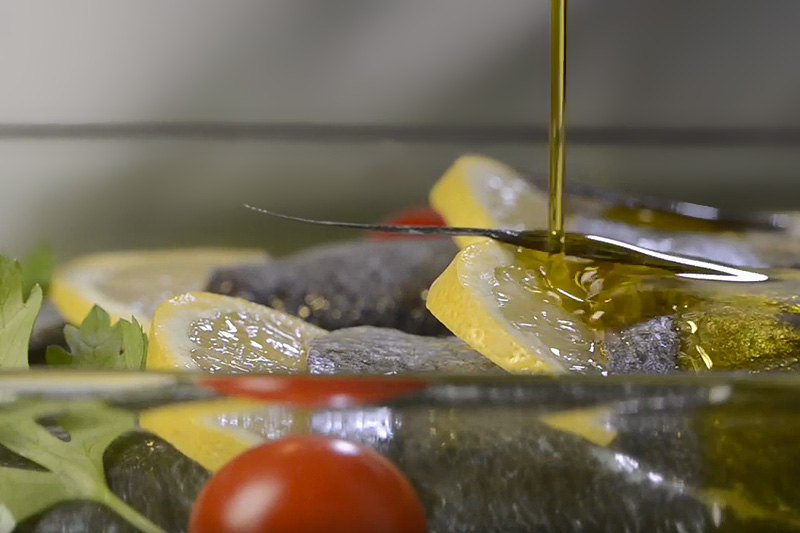
En el fondo de todo parecen que están los polifenoles del aceite de oliva virgen extra, que ya no solo ha quedado demostrado que son unos potentes inflamatorios, también son capaces de ayudar a detener la progresión del cáncer, llegando incluso a extraerse de este estudio y se han documentado casos al respecto, que detiene la evolución de algunas células malignas muy incipientes que pudieran tener algunas de las 4.000 mujeres que participaron en el estudio.
El aceite de oliva virgen extra de la Denominación de Origen Protegida Montoro-Adamuz es extraído de olivares de Sierra y Centenarios, con características edafoclimáticas extremas que hacen que sean aceites de una calidad excepcional y los más ricos en estos componentes fenólicos y por lo tanto en Oleocanthal. Además la variedad de aceituna picual autóctona “Nevadillo Negro” es especialmente rica en estos polifenoles.
Por lo tanto una vida saludable en la que sigamos una dieta mediterránea consistente en verduras, pescados y aceite de oliva virgen extra además de reducir el riesgo cardiovascular, ayuda a prevenir el cáncer de mama.
https://www.youtube.com/watch?v=Cb9kJ8r4YvE
Oleocanthal the miraculous polyphenol
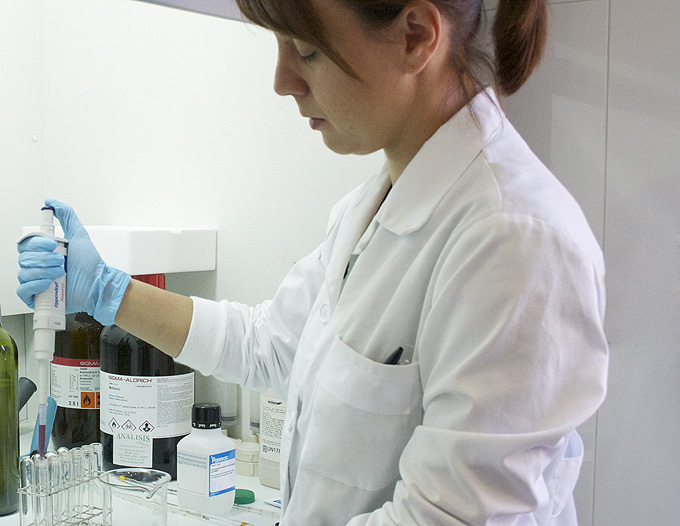 A polyphenol in extra virgin olive oil kills cancerous cells in less than an hour. A study carried out by researchers from Rutgers University and the Hunter College of the City Universityof New York in America, and published in the journal “Molecular &Cellular Oncology” demonstrates this. The polyphenol Oleocanthal OC is found in extra virgin olive oil, obtained by cold extraction at less than 27º C, as long as they are maintained at optimal conditions of preservation.
A polyphenol in extra virgin olive oil kills cancerous cells in less than an hour. A study carried out by researchers from Rutgers University and the Hunter College of the City Universityof New York in America, and published in the journal “Molecular &Cellular Oncology” demonstrates this. The polyphenol Oleocanthal OC is found in extra virgin olive oil, obtained by cold extraction at less than 27º C, as long as they are maintained at optimal conditions of preservation.
The researchers decided to study in vitro the effects of the OC on cancerous cells (pancreas, breast and prostate) and healthy cells. The cells that die suffer apoptosis, a type of suicide that lasts between 12 and 24 hours.
Oleocanthal penetrates the membrane of the cancerous cell and destroys its lysosome. This is why the study says that “attacking the stability of the lysosomal membrane offers a new approach to inducing the death of cancerous cells”.
In a high quality EVOO (Extra Virgin Olive Oil) the concentration of Oleocanthal molecules is 0.2 mg/ml, so a person weighing around 90 kg should ingest 450 mg of OC, which equates to 2.25 litres of oil. The dose used in the study with mice is very high so it is calculated that taking EVOO continuously throughout your life could have a beneficial effect on health.
 The EVOO from the P.D.O. (Protected Designation of Origin) Montoro-Adamuz, according to the results obtained in the latest studies by the Institute of Fats and Fat Derivatives in Seville and the Predimed study, are the EVOO that contain the highest quantity of polyphenols and therefore are the most beneficial to health.
The EVOO from the P.D.O. (Protected Designation of Origin) Montoro-Adamuz, according to the results obtained in the latest studies by the Institute of Fats and Fat Derivatives in Seville and the Predimed study, are the EVOO that contain the highest quantity of polyphenols and therefore are the most beneficial to health.
The combination of factors such as the altitude of the olive grove, the extreme soil and climatic characteristics of the geographical area, together with the endemic variety of the native picual “Nevadillo Negro” olive gives the extra virgin olive oils from the P.D.O. Montoro-Adamuz an exceptionally high quality and makes them the richest in thesephenolic components and therefore rich in Oleocanthal OC.
Sources:
EVOO Montoro-Adamuz – Scientifically demonstrated health benefits
EVOO PDO Montoro-Adamuz – scientifically demonstrated health benefits
The oil from the PDO Montoro-Adamuz is a natural source of health benefits thanks to its high content of bioactive substances.
We have good news about the EVOO from the PDO Montoro-Adamuz!
Research studies demonstrate that “EVOO from PDO Montoro-Adamuz is very beneficial to health”.
Manuel Brenes of the Institute of Fats and Fat Derivatives (IG-CSIC) in Seville gave a presentation at the 28th EFFoST International Conference,heldtogether with the 7th International Food Factory for the Future Conferencewhich took place from 25th to 28th November 2014 at Uppsala Konsert & Kongress (Sweden), under the theme“Innovations in attractive and sustainable food for health”.This has shown, from the studies carried out over the last six seasons, the high content of bioactive compounds in the extra virgin olive oils from the PDO Montoro-Adamuz.
The consumption of extra virgin olive oil is not only highly recommendable for human health due to the high content of fatty acids in its composition, but it is also very beneficial thanks to its content of minor compounds such as phenols, tocopherols, sterols, squalene and others. However, the concentration of these substances in EVOO depends on the type of olives cultivated, the agricultural conditions and the processing methods, among other factors. In this study, thebioactive compounds in EVOO from the PDO Montoro-Adamuz were analysed for various components, in particular phenolic compounds. Similarly, the influence of the location of the olive trees (sunny or shady area) and the content of these substances in the oils were also examined.
The conclusion drawn from this study is thatthe EVOO from the PDO Montoro-Adamuz are very rich in bioactive substances such as oleic acid, sterols, squalene and tocopherols in particular, and they possess a high concentration of phenolic compounds(>700mg/kg)which can be attributed to the extreme agricultural and climatic conditions, the varieties of olive (Picual and Nevadillo Negro) and the early harvesting of the fruit.
This positions the EVOO from the PDO Montoro-Adamuz as the only Protected Designation of Origin whose EVOO has had these components analysed over six years and have scientific evidence of being very healthy.
Oleocanthal, an exciting discovery
The best discoveries sometimes happen due to a coincidence or intuition.
This is the case with the American biologist Gary Beauchamp, discoverer of Oleocanthal, a molecule present in extra virgin olive oil with a strong anti-inflammatory effect.
It turns out that Beauchamp, who gave a speech at the Council of Cordoba on 21st November, invited by the Oleocanthal Society of Andalusia, QVExtra International Association and the Spanish Association of Olive Municipalities, owes this great discovery to chance.
While in Sicily for work he tried the olive oil and detected a flavour similar to that of ibuprofen. This simple perception was the chance start of research that has revealed some extremely surprising data.
The Oleocanthal molecule, present in extra virgin olive oil, has an anti-inflammatory power comparable to that of the non-steroidal inhibitor known as ibuprofen, one of the most widely used drugs worldwide. However, there is one difference between them: Oleocanthal has no side effects for health.
This news is even better if we take into account its role in the prevention of rheumatic illnesses, cardiac disorders, respiratory problems, Alzheimer’s, etc.
However, not all extra virgin olive oils contain the same proportion of Oleocanthal. This depends on many conditioning factors that at first sight seem insignificant in the eyes of non-experts: the quality of the production, the harvesting dates and the types of olive.
In our country, and of course in the PDO Montoro-Adamuz, we can feel very proud as Spain is the main producer of this type of extra virgin olive oil.
Oleocanthal has been added to the long list of health benefits of our oil, something that is demonstrated in the study we carried out in 2008 on the level of polyphenols in our extra virgin olive oils. These have a high content of phenols, much higher than, in some cases three times more than, those in other oils on the market.
(Image from Andreas Levers)
San Andrés Olive Tourism Route
Report in Mercacei
The latest issue of Mercacei Magazine has a special report on the 17th Montoro Olive Tree Trade Fair, in which, as you know, PDO Montoro-Adamuz has a particularly important role.
Over the six pages of this report, the publisher specialising in the olive oil industry gives a detailed description of the characteristics of the mountain olive grove which is characteristic of our PDO, situated in the municipal towns of Montoro, Adamuz, Espiel, Hornachuelos, Obejo, Villaharta, Villanueva del Rey and Villaviciosa de Córdoba.
It highlights our sustainable agricultural practices and traditional harvesting techniques which try, as many of you know, to prevent soil erosion with natural plant cover.
The report also points out the origin of the high polyphenol content of our extra virgin olive oil: “The soil and climatic conditions of the mountain olive groves, situated on acidic, poor and shallow soils, are an exception within the olive groves of southern Spain that, together with the high levels of evapotranspiration and amount of sunshine that provoke stress in the plant, lead to a high content of polyphenols in the oil”. It also adds a mention of the careful cultivation and harvesting of our fruit.
It provides an overview of the health benefits of the high content of polyphenols and antioxidant agents in our extra virgin olive oil; emphasising our work in quality certification.
The report includes an interview with our technical director, Antonio Terán, which you can read below, in which he responds to questions regarding the mountain olive grove and the industry’s prospects.
Without a doubt this report is a big boost to our efforts to promote our extra virgin olive oil, something that is fundamental for our competitiveness in the domestic and international markets.
Mercacei is one of the leading publishing groups with the greatest prestige within the industry, involving notable collaborators and experts from the world of olive oil and winningnumerous international awards for its informative work.
Quality, the key to competitiveness
 Following a short harvest last season we are glad to see the figures showing what we have already handled in this season. Although unconfirmed, the figures already look much more positive than in previous years, as can be seen from the following table.
Following a short harvest last season we are glad to see the figures showing what we have already handled in this season. Although unconfirmed, the figures already look much more positive than in previous years, as can be seen from the following table.
With these figures, we expect oil sales to recover, especially in the export market, and for prices not to fall to the levels that make the business unviable, especially in our quality segment. While quality is the key to competitiveness it leads to high production costs.
Just looking at the five cooperatives from the DCOOP Group, registered in the PDO Montoro-Adamuz (Coop. Agr. Ntra Madre del Sol, Olivarera de Montoro, Coop. Oliv. Ntra. Sra. de la Merced, Olivarera del Guadiato and Coop. del Campo San Antonio Abad) we have figures of more than 80,000 tonnes of olives. This represents more than 200,000 daily wages in the harvest and an income of more than 30 million euros.
Of these figures, around 50% corresponds to the activity of the Coop. Agr. Ntra. Madre del Sol which has also obtained high quality olive fruit of an intense green, highly valued in the market due to their good stability and high content of polyphenols.
All of this has been possible thanks to the improvements made over the last two years in the reception and milling of the olives from our production cooperatives.
The quality of the oil depends not only on the quality of the fruit, but also on caring for it throughout the entire oil production process. Mishandling the olive in the field or in the mill may damage it and lower the category of the oil. Therefore, the farmer and the oil mill are key to the quality of extra virgin olive oil.
At PDO Montoro-Adamuz, therefore, one of our functions is to strengthen the structure of our cooperatives, focusing on the control and improvement of the production quality. However, another of our commitments must be promotion, in order to enhance the value of the product, guaranteeing its origin and quality.
Only with viable and structured companies will we be able to increase the value of our product, which will in turn open the door to export markets (a path that we have already begun to take and that is providing great results).
Long live the Mediterranean diet
Today in our blog we want to highlight the results of two recent pieces of research that have come out of the PREDIMED Study, which we have already spoken about at times.
The reason for choosing these two pieces of research is that both have come to similar conclusions which are very encouraging in terms of human health: a diet rich in polyphenols, such as the Mediterranean diet (based on extra virgin olive oil) contributes to reducing mortality.
The first of these pieces of research is the one that has been coordinated by Doctor Rosa Mª Lamuela, director of the Natural Antioxidants Research Group at the Department of Pharmacy at the University of Barcelona. This has also involved researchers from Rovira i Virgili University (URV).
In this research, which forms part of the doctoral thesis of Ana Trasserra, there has been further analysis of the data provided by the PREDIMED study, which studied people aged between 55 and 80 with cardiovascular risks.
The resulting figures could not have been more positive: this researcher found that the mortality rate (due to cardiovascular diseases or otherwise) of those people who had followed a diet rich in polyphenols was much lower than among the people who had not followed a similar diet.
After her analysis, she also highlighted that certain types of polyphenols were responsible for this reduction in mortality: first we have the stilbenes, present in grape skin and concentrated in red wine; and second we have the lignans found in foods such as olives, sesame and flax seeds and whole grains.
Doctor Lamuela explained that “in other populations studied previously, the consumption of any of the foods rich in polyphenols was not sufficient in itself to reduce mortality, but in our study the consumption of polyphenols was examined more widely, coming from different food sources”. In other words, consuming a variety of types of polyphenols is the key to increasing our life expectancy.
The second study that we want to tell you about focuses specifically on the relationship between the different types of olive oil and the risk of cardiovascular disease, and has been undertaken by the same research groups, although coordinated in this case by Jordi Salas Salvadó, professor at the URV.
This study reveals that if the daily consumption of extra virgin olive oil is increased by 10 grams, mortality due to cardiovascular problems is reduced by 10%. Among the oils, extra virgin olive oil is the best quality due to having a high content of polyphenols, a feature of the oil from the PDO Montoro-Adamuz.
Without a doubt these are two good news stories that once again make us proud of our oil, one of those with the highest content of polyphenols, and make us want to say “Long live the Mediterranean diet!”, as it lengthens our lives.
Course on the Sensory Analysis of Extra Virgin Olive Oil
One of the professional activities carried out in the framework of the 17th Montoro Olive Tree Trade Fair, and one of the most popular this year, was the Course on the Sensory Analysis of Extra Virgin Olive Oil.
A group of 25 students, consisting of millers and experts from the region’s cooperatives, attended this course at the Hotel Mirador in Montoro.
 The first day, 14th May, was led by Brígida Jiménez Herrera, director of theAndalusian Institute of Agricultural and Fisheries Research and Training (IFAPA) in Cabra, who spoke to the participants about the organoleptic properties of extra virgin olive oil. There was then a tasting of international oils and another of the different varieties and blends of oil.
The first day, 14th May, was led by Brígida Jiménez Herrera, director of theAndalusian Institute of Agricultural and Fisheries Research and Training (IFAPA) in Cabra, who spoke to the participants about the organoleptic properties of extra virgin olive oil. There was then a tasting of international oils and another of the different varieties and blends of oil.
The person responsible for running the second day of the tasting course was José María Horcas, head of the laboratory panel at DCOOP. He explained to the participants the features and characteristics of the extra virgin olive oil from the PDO Montoro-Adamuz and the DO Antequera. After his presentation the students took part in a tasting of the olive oils from those designations of origin.
3rd Technical Workshop of the PDO Montoro-Adamuz
With the involvement of more than 200 people, the 3rd Technical Workshop of the PDO Montoro-Adamuz has been one of the highlights of the 17th Montoro Olive Tree Trade Fair (held from 14th to 17th May 2014). In this edition it focused on the values and future of extra virgin olive oil in our designation of origin.
The first presentation in these workshops, dedicated to professionals from the olive industry, was given by the renowned Doctor Ramón Estruch from the University of Barcelona, manager and coordinator of the PREDIMED Study about the effects of the Mediterranean diet on the prevention of cardiovascular diseases. During his presentation he emphasised the conclusions of this study, which show the benefit of consuming extra virgin olive oil, making it clear that “4 or 5 tablespoons per day does not make you gain weight, but rather improves both good and bad cholesterol”.
Moreover, Teresa Pérez Millán, manager of the Interprofesional del Aceite de Oliva organisation, stressed that the level of polyphenols in extra virgin olive oil is what provides its health benefit. In that regard, she highlighted the advantages of the oil from our designation of origin, one of the richest in polyphenols.
Additionally, Pérez Millán noted the need to promote extra virgin olive oil to tourists in order for them to “appreciate our product”, highlighting the different campaigns being carried out by the “Aceites de España” brand throughout the world.
One of the central themes of the technical workshops was undoubtedly the issue surrounding the Common Agricultural Policy (CAP) and mountain olive groves with natural difficulties, a theme that Rafael Sánchez de Puerta, chairman of the EU Olive Oil Advisory Group, addressed in his speech.
Sánchez de Puerta argued that the “CAP must have a better outlook” and said that to achieve this it will be “essential to develop the Rural Development in Andalusia programme”. As he mentioned, this programme will have a budget of 1,900 million and will be managed by the Rural Development Groups (RDG) of Andalusia, who will surely be committed to the mountain olive grove, one of the hardest hit. He continued by saying that “this type of policy, which covers the period between 2014 and 2020, could be implemented from next year”.
During his presentation, Sánchez de Puerta also emphasised the need for the involvement of companies that position our products in the international market. He stressed that two thirds of the olive grove production is already exported across the world, exceeding our main competitor, Italy. In this regard, he focussed on turning farmers into entrepreneurs through cooperatives, in order to strengthen industrialisation, commercialisation and, therefore, the growth of the industry.
In addition to the aforementioned presentations, others were given by renowned researchers and professionals from industries related to extra virgin olive oil, such as Doctor Francisco Pérez Jiménez, from the lipids unit of the Reina Sofía Hospital in Cordoba.
Similarly, during the technical workshops, those who took part were able to enjoy a healthy breakfast based, of course, on extra virgin olive oil.
Summary of the 17th Montoro Olive Tree Trade Fair
Once again this year, Montoro became the epicentre of the olive oil industry thanks to the 17th Olive Tree Trade Fair, which took place from 14th to17th May.
This is a leading event in the industry and this year 140 companies (17 from foreign countries) took part, of which 132 exhibited their products. Among the stands was the one for PDO Montoro-Adamuz, which each day during the event offered those attending a taste of our extra virgin olive oil.
Beyond the exhibition, the 17th Olive Tree Trade Fair brought together oil experts from many different professional activities, allowing them to pool ideas, proposals and figures, generating a more profitable dialogue.
Among the conclusions reached we can highlight the one explained by Antonio Sánchez Villaverde, chairman of the Olive Tree Trade Fair Consortium, who is committed to “a system for the concentration of cooperatives that brings together all the cooperatives from the Alto Guadalquivir district and would be capable of milling 300 million kilogrammes of olives, cutting costs for the farmers, being competitive and making oil profitable”.
In terms of industrial and technological quality and innovation, this was addressed during the opening ceremony by Elena Víboras, Minister of Agriculture, Fishing and Rural Development at the Government of Andalusia, who stated that the intention of this public body is yet again to ask the national Ministry for aid that includes the traditional sloping olive grove, “the key to ensuring the viability of family farms”.
Víboras also pointed out “the olive oil potential of the province of Cordoba, which has the greatest number of Designations of Origin for olive oil in Andalusia: Montoro-Adamuz, Baena, Lucena and Priego de Córdoba”, being the second largest producer of olive oil in Andalusia and Spain.
In addition to other professional activities, such as the Technical Workshops and the Tasting Course, which we will discuss in more depth in later blog posts, the 17th Olive Tree Trade Fair was the setting chosen to reward the work of the professionals in the olive oil industry with different awards.
For example we have the 8th “Pedro León Mellado” Awards for the Quality of Extra Virgin Olive Oils, whose special prize for the Best extra virgin olive oil from the DO Montoro-Adamuz, has gone to the “Nuestra Madre del Sol” Agricultural Cooperative in Adamuz.
In terms of the Diario Córdoba Montoro Olive Tree Trade Fair Awards 2014, the award for Milling Master was won by Nicolás Carrasco Majuelos, that for Innovation and Development by Pieralisisi, that for Business Initiative by Agrocor and the award for Environmental Protection by CBH Agro.
Moreover, López Garrido was named the best Export Company, Vibradores MAI the best Family Business, and Calero the best stand at the fair. It is worth noting that the award for Social Initiative has remained in Montoro, specifically with the Asociación de Comerciantes Épora (Merchants Association of Épora).
17th Montoro Olive Tree Trade Fair
Next week will see a new edition of the Montoro Olive Tree Trade Fair, an essential date in the international olive oil calendar.
From 14th to 17th May 2014, the town of Montoro will yet again become the capital of extra virgin olive oil with the 17th Olive Tree Trade Fair, focusing on promoting the study of the olive grove and the latest technical advances in this industry.
Highlights among a varied programme include two events: the Course on the Sensory Analysis of Extra Virgin Olive Oil and the 3rdTechnical Workshops of the PDO Montoro-Adamuz.
The Course on the Sensory Analysis of Extra Virgin Olive Oil will take place on the 14th and 15th May 2014 in the Hotel Mirador in Montoro, and will focus on the tasting of olive oils from the designations of origin of Montoro-Adamuz and Antequera.
During the first day of this course, which will begin at 4.30pm with a presentation from Antonio Terán, technical director for our designation of origin, Brígida Jiménez Herrera, director of the Andalusian Institute of Agricultural and Fisheries Research and Training (IFAPA) in Cabra, will talk to the attendees about the organoleptic properties of extra virgin olive oil. There will then be a tasting of international oils and another of the different varieties and blends of oil.
On 15th May it will be the turn of José María Horcas, head of the laboratory panel of DCOOP, whose presentation will focus on the quality of olive oil and the elements that influence this. After his presentation there will be a tasting of oils from the season from Montoro-Adamuz and Antequera.
On that same day, in the Miguel Romero Esteo Municipal Theatre, the 3rd Technical Workshops of the PDO Montoro-Adamuz will start. This edition will focus on the values and future of extra virgin olive oil in our designation of origin.
Those responsible for opening this event, which begins at 9am, areAntonio Sánchez Villaverde, Mayor of Montoro; Francisco Terán Blanco, Chairman of the Governing Board of the PDO Montoro-Adamuz; and Ana María Romero Obrero, Director General of Quality, Agro-food Industries and Ecological Production at the Ministry of Agriculture, Fishing and Rural Development at the Government of Andalusia.
At 9.30am, Doctor Ramón Estruch will present the PREDIMED study titled “Effects of the Mediterranean Diet on the first prevention of cardiovascular disease”, which we recently told you about in this blog.
This presentation will be followed by a round table session “Benefits of olive oil and its polyphenols on health”, which will involve, in addition to Doctor Estruch, Teresa Pérez Millán, manager of the Interprofesional del Aceite de Oliva organisation, and Doctor Francisco Pérez Jiménez, from the lipids unit at the Reina Sofía Hospital in Cordoba.
To recharge the batteries so that we can continue with these intensive days, there is nothing better than a miller’s breakfast including, of course, its olive oil.
After the break it will be the turn of the Chairman of our Governing Board, Francisco Terán Blanco, who will talk to us about the “Present and future of extra virgin olive oil from the PDO Montoro-Adamuz”.
At 12 noon the presentationtitled“The CAP from here to 2020, the mountain olive grove with natural difficulties” will be given by Rafael Sánchez Puerta, Chairman of the EU Olive Oil Advisory Group and Juan Carlos Vega Chacón, coordinator of the subsidies service at DCOOP.
The last session will be titled“New regulation for the sustainable use of plant protection products. Compulsory integrated pest management and the farm register”. Those responsible for giving this will be Pablo Soto Hermoso, Head of Service of the Provincial Delegation of Cordoba of the Ministry of Agriculture, Fishing and Rural Development at the Government of Andalusia; and Francisco Javier Merino Sierra, Director of the District Agricultural Office of Montoro at the same Ministry.
To complete our workshop we will count on the presence of Francisco Zurera Aragón, representative of Agriculture, Fishing and Rural Development at the Government of Andalusia.
However, the 17th Montoro Olive Tree Trade Fair does not end there. Over the days there will be a large number of exhibitions, contests and competitions, all to enhance the value of the cultivation of the olive grove, essential in understanding the history, economic development and day to day life of the town of Montoro, the jewel of the Alto Guadalquivir in Cordoba.
You can find the complete programme for the fair and register on its website: www.feriadelolivo.es
Extra virgin olive oil: a great ally against diabetes
Sometime ago we told you in our blog about the study conducted by the Department of Endocrinology and Nutrition at the Carlos Haya Hospital in Malaga on the role of fat in the diet. This demonstrated, among other noteworthy results, that extra virgin olive oil from the PDO Montoro-Adamuz increased sensitivity to insulin.
Today we want to delve a little deeper into the relationship between extra virgin olive oil and the prevention of certain diseases, such as diabetes.
A new result from the PREDIMED Study (Prevention with Mediterranean Diet) has recently been published in the Annals of Internal Medicine journal, which shows that the Mediterranean diet, supplemented with extra virgin olive oil, reduces the risk of developing diabetes.
The research involved 7,447 people, of whom 3,541 did not suffer from diabetes mellitus at the time of their participation. During the almost five years for which the study lasted, they were subjected to annual analyses to check what percentage began to suffer from this disease when following a Mediterranean diet supplemented with extra virgin olive oil and the results could not have been better: extra virgin olive oil reduces the risk of developing diabetes by 40%.
The coordinator of this study, Doctor Ramón Estruch, acknowledges that, although positive results were expected, the great power of extra virgin olive oil to prevent cardiovascular diseases, in this case diabetes, has been a complete surprise.
So much so that a new study, the PREDIMED Plus, has already been planned, through which the possible beneficial effects of extra virgin olive oil in treating people who are obese and overweight will be looked at in more depth.
If the result is positive it would finally banish the idea that extra virgin olive oil “makes people gain weight”, as is commonly thought. According to Doctor Estruch, the aim is to “demonstrate that a well-balanced diet, which includes extra virgin olive oil, can help people to lose weight and partially prevent the appearance of complications such as heart attacks or strokes”.
He also aims to conduct another study to determine whether following the Mediterranean diet supplemented with extra virgin olive oil can also contribute to preventing the appearance of certain types of cancer.
With figures as positive as these, we cannot be prouder of contributing to the promotion of such a healthy food as the extra virgin olive oil from the PDO Montoro-Adamuz.
4th Edition of the “Botijuela”
Miller’s breakfast on Andalusia Day: a very healthy tradition
Extra virgin olive oil in non-refillable packaging will be compulsory in the hospitality industry
Non-refillable packaging in the hospitality industry will benefit the production of high quality olive oil.
This initiative is very important as it will fundamentally benefit those producers and packagers committed to quality. In fact, with all the packaging correctly labelled the consumer will have more opportunity to compare some brands with others and, in such comparisons, the best value for money will always come out the winner.
The requirement for oil packaging to be labelled and non-refillable is very important in terms of protecting the image of this product, as the anonymous oil dispensers used today in many hospitality establishments are not suitable for continuous use and re-filling, which harms the olive oil. This regulatory change is going to help extra virgin olive oil to achieve a prestige similar to that already achieved by wine, as the hospitality industry is going to influence the consumption of this product. The consumers will discover different brands and types of olive oil through consuming them in restaurants or hotels and if the product they have tasted is to their liking they will then consume it at home.
Additionally, this regulatory change will encourage bar and restaurant owners to offer different extra virgin olive oils for breakfast, salads or starters, which will increase the advisory role of the Horeca sector. Moreover, the fact that the oil is going to be supplied in single-use containers does not mean that the final bill paid by the customer in a hospitality establishment will be larger, as oil represents a very small percentage of costs for the owner.
PDO Montoro-Adamuz Oil and Health Video
We have recently made a corporate video entitled “PDO Montoro-Adamuz oil, Source of Health”.Benefits of Extra Virgin Olive Oil and its Polyphenols. We have included a short introduction about the extra virgin olive oils from the PDO Montoro-Adamuz with some beautiful images of the area’s mountain olive groves and the mission of the Governing Board. It includes the conclusions from the Workshops on Oil and Health from the PDO Montoro-Adamuz, where Doctor Manuel Brenes from the Institute of Fats and Fat Derivatives, Doctor Fernando López Segura from the lipids unit at the Reina Sofía Hospital and Doctor Montserrat Fito from the Hospital del Mar in Barcelona discuss the conclusions from their respective work. We offer you a link so that you can enjoy it.
https://www.youtube.com/watch?v=Ly-pUDBNK8M



